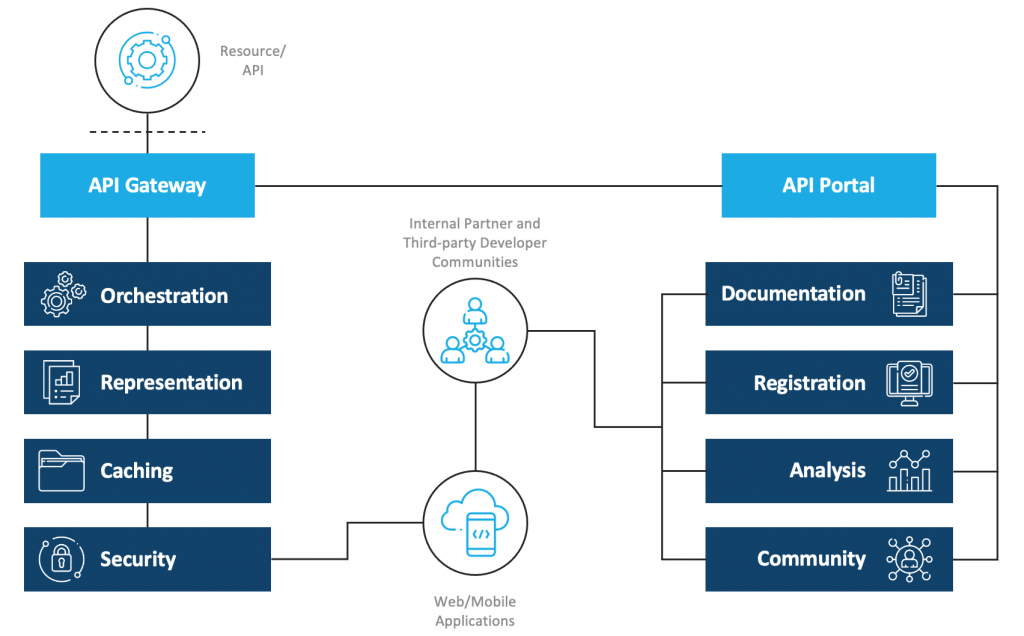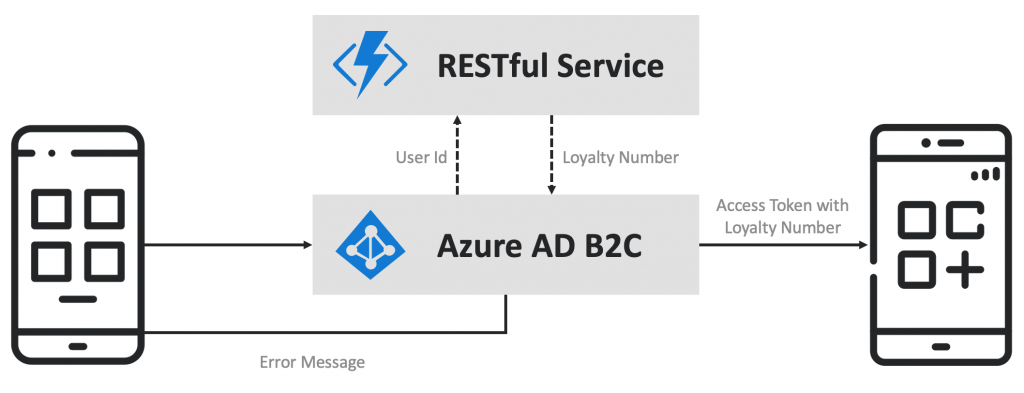Introduction
Application Program Interface Management (APIM) is a way to create consistent and contemporary API gateways for already-existing back-end services. In other words, it is the process of creating, disseminating, analyzing, and documenting APIs in a secure manner. To maximize the value of data and services, organizations can use API management, where they can publish APIs to external, partner, and internal developers. An API management solution can ensure both public and internal APIs are consumable and secure.
Why Azure API Management?
The main function of this tool is to offer a central interface for the creation, provisioning, and management of API for web and cloud applications and services. With Azure API Management, users can,
- Monitor the health of APIs
- Identify errors
- Configure throttling
- Rate limits and more on each API
- Provide details about how APIs are used
Architecture
An API gateway is a hardware or software-based networking component that offers practical means of building tiered API architecture. The loose coupling between exposed resources and client applications is a key advantage of this approach. Every call to an API must go through a gateway-encrypted architectural layer so that resources and apps don’t directly intact when reaching the interface. For architects in charge of an API program, centralization has numerous additional advantages, including,
- Providing a location for implementing a consistent set of API management policies
- Reducing the number of code and infrastructure components that must be supported

An API Gateway will support the majority of the architectural functionality required for the creation, implementation, and management of APIs. The ability to interact, educate, and manage developers is another requirement for API publishers. Usually, this involves sending registration service documents, analytical data, and other resources. The best way to provide developers with access to these resources is through a specially designed website, sometimes known as a developer portal or API portal. For instance, this integrated infrastructure enables developers to self-register on the site and immediately start sending requests to the gateway. Together, a gateway and portal significantly streamline the management of APIs and developers, lowering integration costs, ensuring safe operation of back-end systems, and facilitating the development of truly client applications.
API Management Services
Azure API Management is a multi-cloud, hybrid management tool for APIs in all contexts. API Management, as a platform-as-a-service, supports the entire API lifecycle. APIs allow digital experiences, facilitate application integration, serve as the foundation for new digital products, and make data and services reusable and globally accessible. With the prevalence and growing reliance on APIs, businesses must manage them as first-class assets throughout their existence.

API Gateway
The API gateway that sits on top of your backend APIs can do the following,
- Accepts API calls and routes them to your backend APIs
- Confirms the authenticity of API keys, JWT tokens, certificates, and other credentials
- Enforces usage quotas and rate limits
- Cache’s backend responses were set up
- Logs call metadata for analytics purposes
- Transforms your API without the need to modify your code
API Portal
- It is used to build a variety of Azure resources during this course, including virtual machines, app service instances, SQL databases, etc.
- Additionally, it is used to set up and carry out several API management-related tasks. For instance,
- Define or import API schema
- Package APIs into products
- Configure policies such as quotas or transformations on the APIs
- Get insights from analytics
- Manage users
Developer Portal
The Developer portal, as its name suggests, is for developers who wish to use APIs in the apps they create. They can use it to,
- Signup to the account and subscribe to get API keys
- Test the API calls
- Read the API documentation flow
- Access the analytics dashboard on their own usage
API Connection

In order to consume the sign-up process and interface with external systems as a developer or IT administrator, you may integrate your sign-up user flows with Rest APIs using API connectors.
As an illustration, using API Connectors, you can do the following,
Validate User Input Data
- You can cross-check user-provided data against data already stored in an external data store or a list of external data stores
- If the data is inaccurate, you may either ask the user to supply accurate information or prevent them from completing the sign-up processes
Verify User Identity
To provide an additional layer of security to account creation decisions, use an identity verification service or external identity data sources.
Augments Tokens with attributes from external sources
Tokens with attributes about the user from sources external to Azure Active Directory Business to Consumer (AD B2C) such as cloud systems identity services and more
Conclusion
Application Program Interface Management (APIM) checks the status of APIs, locates faults, and configures throttling, and rate limits on each API. It offers a common interface to manage and organize thousands of APIs spread across numerous platforms. Also, it provides an authentication and access control system to govern and guarantee the security of API usage and access.





